It has been an extraordinary week for open access advocates, and it is only Wednesday! For those keeping score, here is a recap of events, along with some commentary.
On Monday, Elsevier issued a press release withdrawing its support for the Research Works Act. The RWA, of course, was a bill proposed in the US Congress that would have rolled backed the National Institutes of Health public access mandate and forbidden any other research funding agencies from adopting similar policies that would give taxpayers unfettered access to the research for which they have paid.
Within hours of Elsevier’s press release, the sponsors of the RWA in the House of Representatives announced that they would not pursue passage of the bill. It seems it was Elsevier’s legislation from the start, so the publishing giant got to call the shots for Congress. The announcement from Representatives Issa and Maloney contained the first extraordinary statement of the day, when they said that “The American people deserve to have access to the research for which they have paid.” This, of course, is what they had tried to prevent, and we must read the statement with a suspicious eye. But on its face, it seems to acknowledge the fundamental justice behind public access policies.
When the sponsors of the RWA folded their tents so promptly, I think we were left wondering if its introduction was simply a strategic move to stake out legislative ground, or a trial balloon by Elsevier to gauge support for open access. If strategy it was, it seems to have failed spectacularly.
Elsevier followed up its withdrawal of support for the RWA with an open letter to the mathematics community. These scholars, remember, are at the core of the boycott directed at Elsevier that has been gaining momentum for over a month and is still growing. That letter also contained some extraordinary statements; in it the publisher seems to promise to lower some of its prices (although they base this promise on an arbitrary pricing standard that they have created) and to acknowledge that the bundling of journals into high-priced and inflexible packages (which they call “large discounted agreements”) is a problem. I wonder if they mean this, or if it is simply more strategy?
The letter to the mathematicians contains an appeal for collaboration between Elsevier and the scholarly community. In that vein, I respectfully offer three paths that mathematicians might pursue regarding Elsevier in the coming months:
- Talk with them, by all means, but don’t believe everything you hear. Two principles are important to keep in mind. First, their primary value is returning a profit to their shareholders, not the progress of your work or your discipline. Second, they have no product to sell if you do not give them your intellectual property for free, so you have a lot of power here. In a New York Times article published yesterday about the open access debate, scholars who support open access are called dishonest for continuing to submit their works to traditional journals; the boycott you have started reverses that alleged dishonesty and gives you considerable influence. Don’t waste it.
- Keep exploring alternative publication models. Even if Elsevier lowers its prices and introduces more flexibility into their bundling, it is hard to see the toll-access model as the path to the future. For mathematics, where grants are smaller and many scholarly societies depend on subscription revenues, a “flipped” pricing model such as is being explored in physics with the SCOAP3 experiment, might make the most sense. But in any case, it is important to keep experimenting with new ways to disseminate scholarship, especially more openly.
- Whenever you or a colleague/student does publish with Elsevier, look carefully at the publication agreement that is offered and cross out any language that ties your right to self-archive your work to the non-existence of an open access mandate from your institution of funder (you can find a sample agreement with this language here). This is an outrageous interference with academic freedom, and authors should not tolerate it. Simply pick up your pen and cross out any language that says you may only post a final manuscript of your work if you and your colleagues have not adopted a policy saying that you must do so. In this regard, it is worth noting this article by Kristine Fowler from the AMS website analyzing the relative success that mathematicians have had negotiating the terms of their publication agreements with the largest publishers in their discipline.
Meanwhile, all of us – mathematicians, linguists, librarians, anthropologists or whatever — should transfer the energy we put into opposing the Research Works Act toward support for the Federal Research Public Access Act, which was introduced in both House of Congress a couple of weeks ago. The case for FRPAA is made far better than I could put it in this essay on “Values and Scholarship” that was published by all 11 provosts of the universities that make up the CIC (Committee on Institutional Cooperation) in last Thursday’s edition of Inside Higher Education. Their extraordinary, unified vision for scholarship in the digital age should provide the touchstone by which this discussion moves forward.

